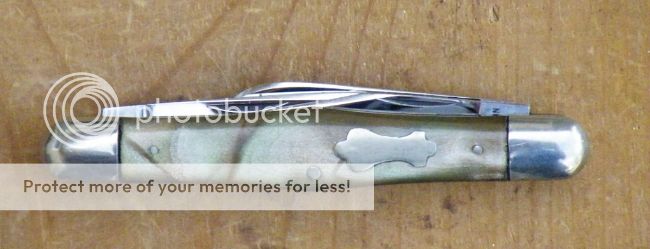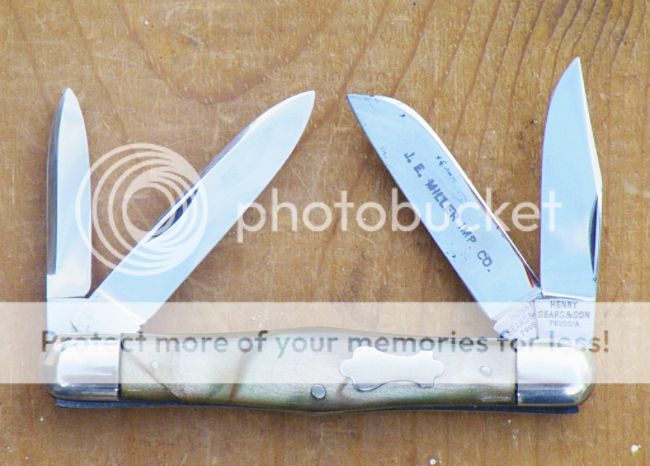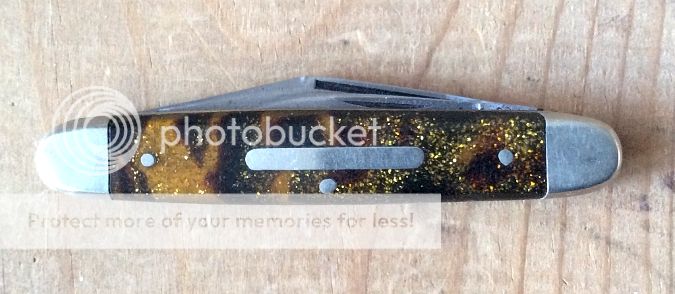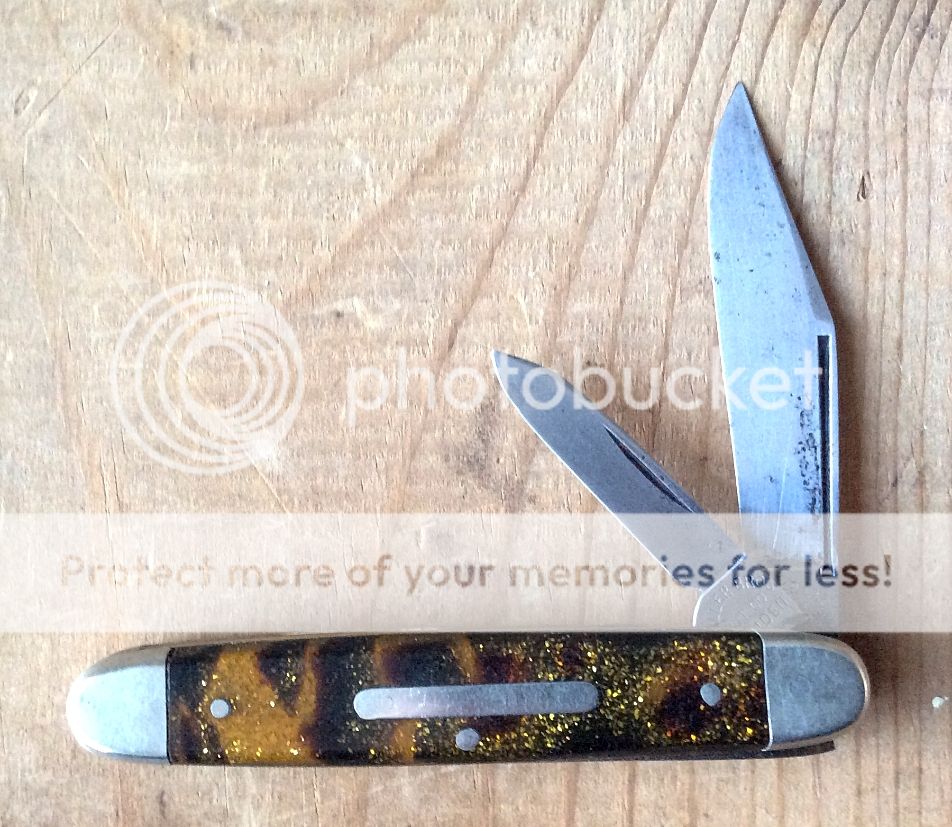I'm interested in an answer to Rick's question, too.
I also wonder when people first became aware of the problem with celluloid outgassing and whether celluloid continued to be used even after it became apparent that there was a potential for problems.
I've seen descriptions of current Chinese-made knives (e.g., Taylor-Imperial and Rough Rider) that claim the covers are celluloid. Is that the same material that was used in the past, or is there a new modern celluloid that's more stable than the celluloid from 100 or more years ago? Or is it just a marketing gimmick trying to evoke nostalgia with the word "celluloid" when the material is really some stable synthetic? Despite my fears about what might happen with celluloid, I've actually purchased a couple of new Chinese Imperials with what are described as "cracked-ice celluloid" covers.
- GT
It seems that most of the problematic celluloid used for knife handles pre-dates WWII, and I had heard that some of the celluloid used on modern knives such as the "Fight'n Rooster" models were actually new old stock material???
Old movie film was also made from celluloid and much of it has also deteriorated in time.
I don't know about the chemical make up of modern celluloid and perhaps there is a better process in stabilizing it, but much the old stuff is still holding up just fine.



















